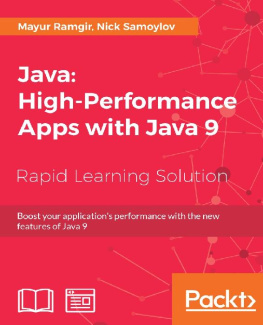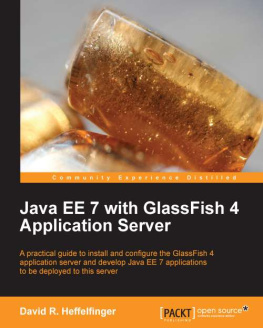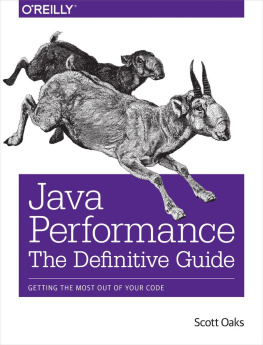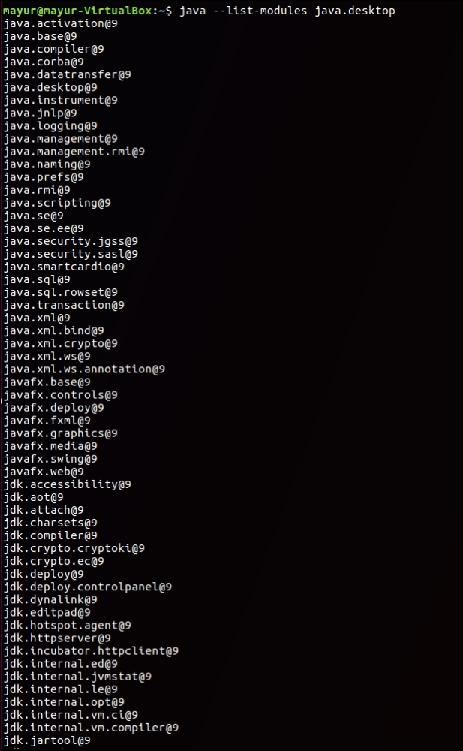Mayur Ramgir - Java 9 High Performance: Practical Techniques and Best Practices for Optimizing Java Applications Through Concurrency, Reactive Programming, and More
Here you can read online Mayur Ramgir - Java 9 High Performance: Practical Techniques and Best Practices for Optimizing Java Applications Through Concurrency, Reactive Programming, and More full text of the book (entire story) in english for free. Download pdf and epub, get meaning, cover and reviews about this ebook. year: 2017, publisher: Packt Publishing, genre: Computer. Description of the work, (preface) as well as reviews are available. Best literature library LitArk.com created for fans of good reading and offers a wide selection of genres:
Romance novel
Science fiction
Adventure
Detective
Science
History
Home and family
Prose
Art
Politics
Computer
Non-fiction
Religion
Business
Children
Humor
Choose a favorite category and find really read worthwhile books. Enjoy immersion in the world of imagination, feel the emotions of the characters or learn something new for yourself, make an fascinating discovery.
- Book:Java 9 High Performance: Practical Techniques and Best Practices for Optimizing Java Applications Through Concurrency, Reactive Programming, and More
- Author:
- Publisher:Packt Publishing
- Genre:
- Year:2017
- Rating:5 / 5
- Favourites:Add to favourites
- Your mark:
Java 9 High Performance: Practical Techniques and Best Practices for Optimizing Java Applications Through Concurrency, Reactive Programming, and More: summary, description and annotation
We offer to read an annotation, description, summary or preface (depends on what the author of the book "Java 9 High Performance: Practical Techniques and Best Practices for Optimizing Java Applications Through Concurrency, Reactive Programming, and More" wrote himself). If you haven't found the necessary information about the book — write in the comments, we will try to find it.
Best practices to adapt and bottlenecks to avoid
About This Book- Tackle all kinds of performance-related issues and streamline your development
- Master the new features and new APIs of Java 9 to implement highly efficient and reliable codes
- Gain an in-depth knowledge of Java application performance and obtain best results from performance testing
This book is for Java developers who would like to build reliable and high-performance applications. Prior Java programming knowledge is assumed.
What You Will Learn- Work with JIT compilers
- Understand the usage of profiling tools
- Generate JSON with code examples
- Leverage the command-line tools to speed up application development
- Build microservices in Java 9
- Explore the use of APIs to improve application code
- Speed up your application with reactive programming and concurrency
Finally, a book that focuses on the practicalities rather than theory of Java application performance tuning. This book will be your one-stop guide to optimize the performance of your Java applications.
We will begin by understanding the new features and APIs of Java 9. You will then be taught the practicalities of Java application performance tuning, how to make the best use of garbage collector, and find out how to optimize code with microbenchmarking. Moving ahead, you will be introduced to multithreading and learning about concurrent programming with Java 9 to build highly concurrent and efficient applications. You will learn how to fine tune your Java code for best results. You will discover techniques on how to benchmark performance and reduce various bottlenecks in your applications. Well also cover best practices of Java programming that will help you improve the quality of your codebase.
By the end of the book, you will be armed with the knowledge to build and deploy efficient, scalable, and concurrent applications in Java.
Style and approachThis step-by-step guide provides real-world examples to give you a hands-on experience.
**
Mayur Ramgir: author's other books
Who wrote Java 9 High Performance: Practical Techniques and Best Practices for Optimizing Java Applications Through Concurrency, Reactive Programming, and More? Find out the surname, the name of the author of the book and a list of all author's works by series.

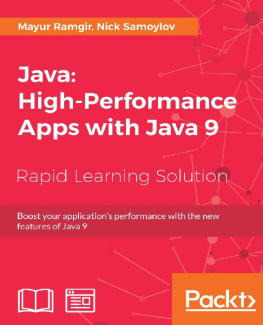

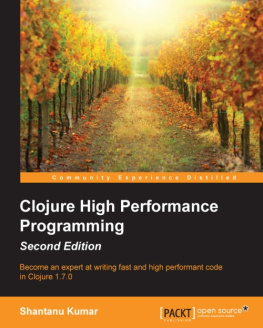
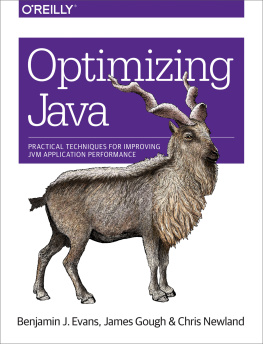

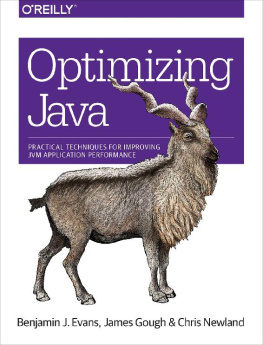
![Elder Moraes [Elder Moraes] - Java EE 8 Cookbook](/uploads/posts/book/119370/thumbs/elder-moraes-elder-moraes-java-ee-8-cookbook.jpg)
